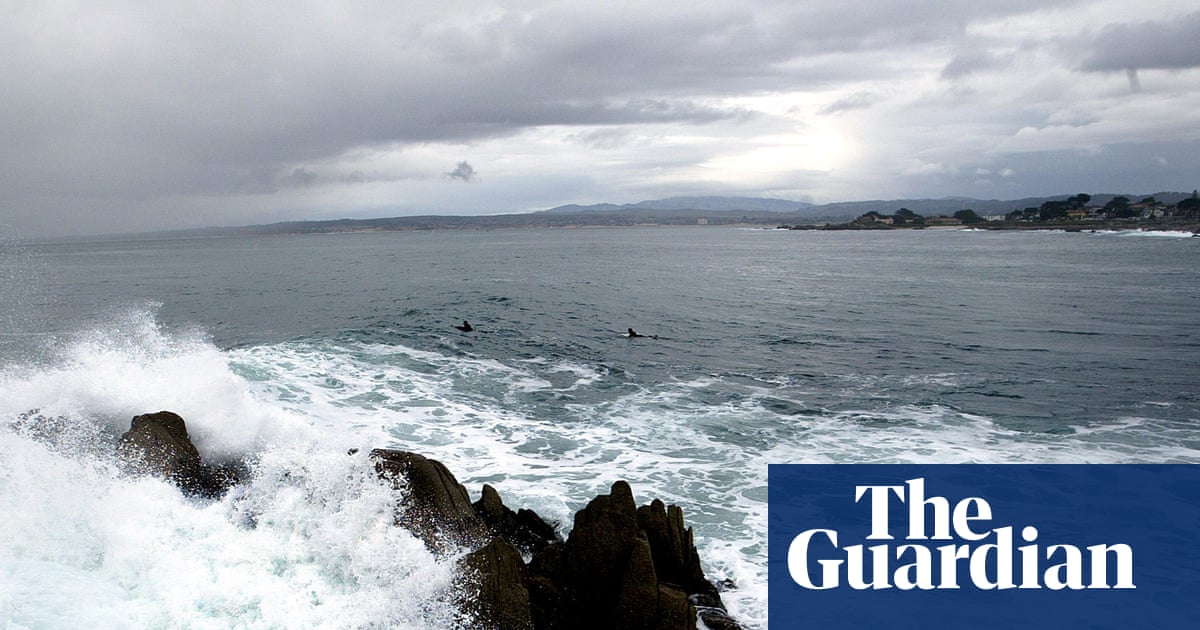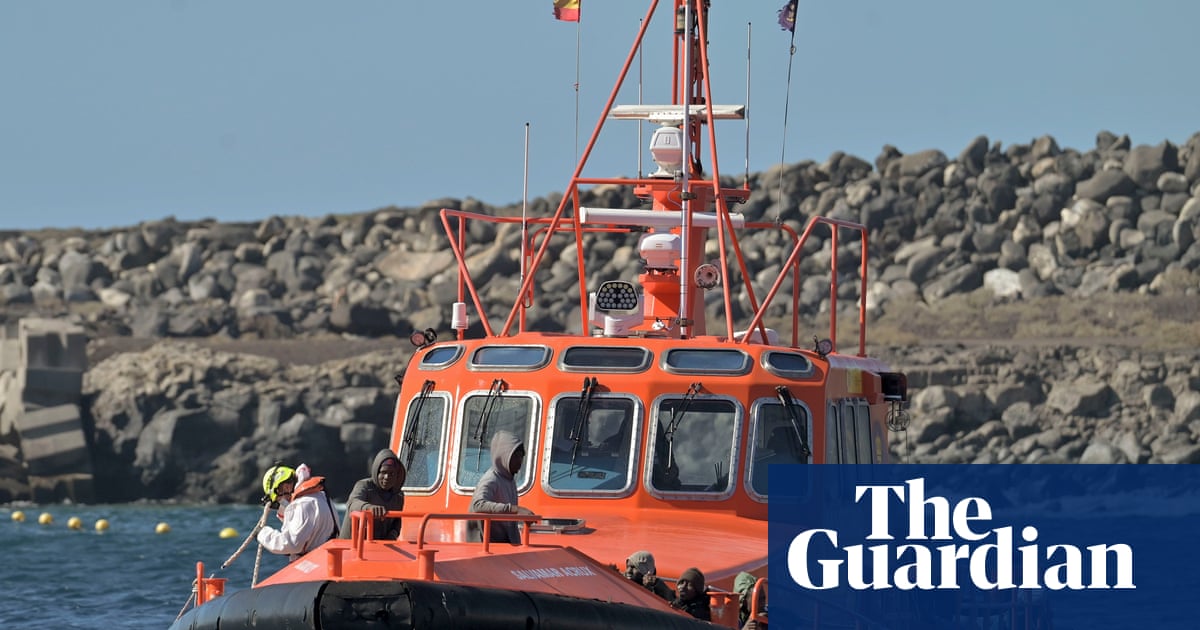“The designer claims that you could drink the water from there,” says Nick Bean, an engineer for the local council, at a large shallow basin in a nature reserve in Brighton. It is a blazing summer day and a group of researchers, engineers, students and a city councillor, dressed in hi-vis clothing and safety goggles, are gathered at the site of the city’s new and ambitious project to help manage the toxic problem of road runoff.
After six years, the Wild Park rainscape, formed of a vegetated swale linked to four planted basins, is at the tail end of development. Dry and golden beneath the sun, the landscape, if all goes well, will soon teem with lush greenery and wildlife. But it will also be performing a much more critical function: filtering pollutants from runoff to prevent them from seeping into the precious chalk aquifer that lies beneath the city.
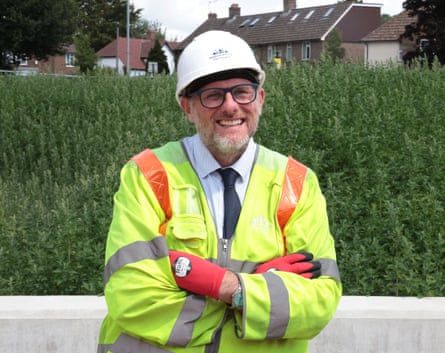
So little is known about road runoff, the liquid that sloughs off roads and into our waterways when it rains. It is not monitored by the UK government or globally, and the makeup of this chemical and microplastic cocktail will vary from country to country and from one road to another.
And yet this toxic liquid – millions of gallons a year – is a significant pollutant in a multitude of ways. The microplastics shed by car tyres make up a quarter of the microplastics in the environment, according to one study. The chemicals in those tyres and the runoff are also highly problematic. Many of them are toxic for aquatic life: in 2020, for example, runoff was linked to a vast die-off of silver salmon off the US west coast. And, of course, they spread up the food chain. Researchers in southern China recently found tyre-derived chemicals in most human urine samples. This is especially concerning as some of the chemicals are known carcinogens.
The problem is made worse by the climate crisis, which brings heavier rainfall and more rapidly overwhelms city sewage systems. Coping with storm water has become a new challenge for local authorities and governments everywhere.
But monitoring the problem or stopping it at source seems, for now, too complex. In most cases, local authorities and governments seem to more or less shrug it off.
In some locations, such as Brighton, where the entirety of the city’s drinking water is sourced from the underground chalk aquifer, a shrug will not do: preventing pollution from seeping into the ground is critical to reducing reliance on chemical water treatments.
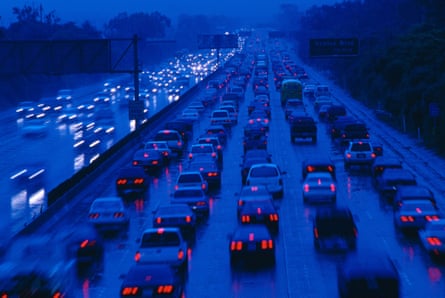
Hence the rainscape, a nature-based structure in Wild Park that will be enhanced by technology and designed to treat the water running off a 2.5-mile stretch of the A27. The Aquifer Project, formed in 2016 to protect the chalk aquifer, secured £1.79m funding from National Highways to build the rainscape with the help of Brighton and Hove city council.
As Mélanie David-Durand, a former biosphere programme manager for the Living Coast Unesco biosphere, which manages the Aquifer Project, explains: “If we don’t have the water being soaked up by nature-based solutions like swales or rainscapes then it will directly flood into the sewers and trickle down through the aquifer.”
Research by Martin Smith, a professor of geochemistry at the University of Brighton, found that contaminant levels in the area’s water were higher than recommended.
Smith says: “Lead is still there – a legacy from when lead used to be in fuel. There’s chromium from the road paints. We also looked at polyaromatic hydrocarbons, which come out of the bitumen and from the rubber in the tyres, because they are known to be quite deleterious environmental contaminants.”
Under the new system, instead of seeping directly into the chalk aquifer, water from the motorway will be captured and will flow along a 1.2-mile route, passing through multiple stages of filtration, before being released into the ground. Two vortex separators have been installed in a balancing pond near the motorway to remove particulates, such as grains and granules.
“What we managed to show,” says Smith, “is that a major part of that contaminant load [from road runoff] is in the solids. So if you can get the solids out then you’ve done 80% of the treatment job.”
The remaining water will then move through three bays of reeds and planting before being piped to settlement basins in Wild Park.
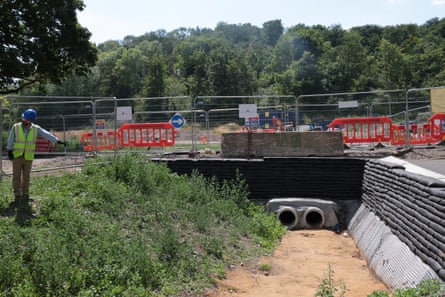
“The finer material will get filtered out by the plants … The mixture of extra oxygen in the water, sunlight, and the action of the plants themselves will break down some of the remaining contaminants,” Smith says. “So finally, what comes out of the basin down here should be really good quality water.”
after newsletter promotion
The team behind the development are hopeful the landscape will improve the local community’s access to nature as well.
David-Durand says: “It’s not just managing the water, it’s really about people. Wild Park nature reserve is in the Moulsecoomb area, which is highly deprived. And we hope this is going to make that area more appealing, both for the residents and for people from outside the area. We’re really hoping that the ponds and the water will help people of all ages and backgrounds enjoy nature, feel good and enjoy their lives.”
It is the same approach that other countries are taking to road runoff. Monitoring it at source is extremely challenging, but installing green infrastructure such as bioswales, wetlands and permeable pavements is one way to tackle the issue.
In Michigan in the US, permeable pavements and a rain garden have been created. In Guangxi in China, storm water runoff has been reduced by 75% by implementing a palette of measures. Our global understanding of how to implement the “sponge city” is leaping ahead.
Across the road from Wild Park, children at Moulsecoomb primary school are reaping the benefits of their own rain garden, spending lunchtimes fishing for wildlife in ponds.
The rain garden, installed at the school with support from the Aquifer Project and local organisations, was similarly designed to reduce water pollution and mitigate flood risk. Water from the school’s rooftops is funnelled through drainpipes into flowerbeds, water storage systems and ponds.
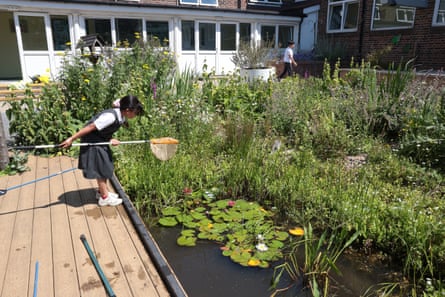
Katie Eberstein, the environmental education programme manager at Brighton and Hove city council, who is raising awareness of water issues with schools across the city, says: “It’s an important place to engage young people so that they understand how water can get polluted, how flooding causes problems, and how we can use nature to keep our water clean.”
Smith and his students will continue to monitor the performance of the Wild Park rainscape over the coming years – data he hopes to share with other councils to inspire similar developments.
He says: “We’ve now got a demonstration site to show other councils and authorities managing road systems that this kind of system works.”
-
Tours of the rainscape will take place on 21 September from noon to 3pm as part of a community event to celebrate Wild Park.

 3 months ago
55
3 months ago
55






